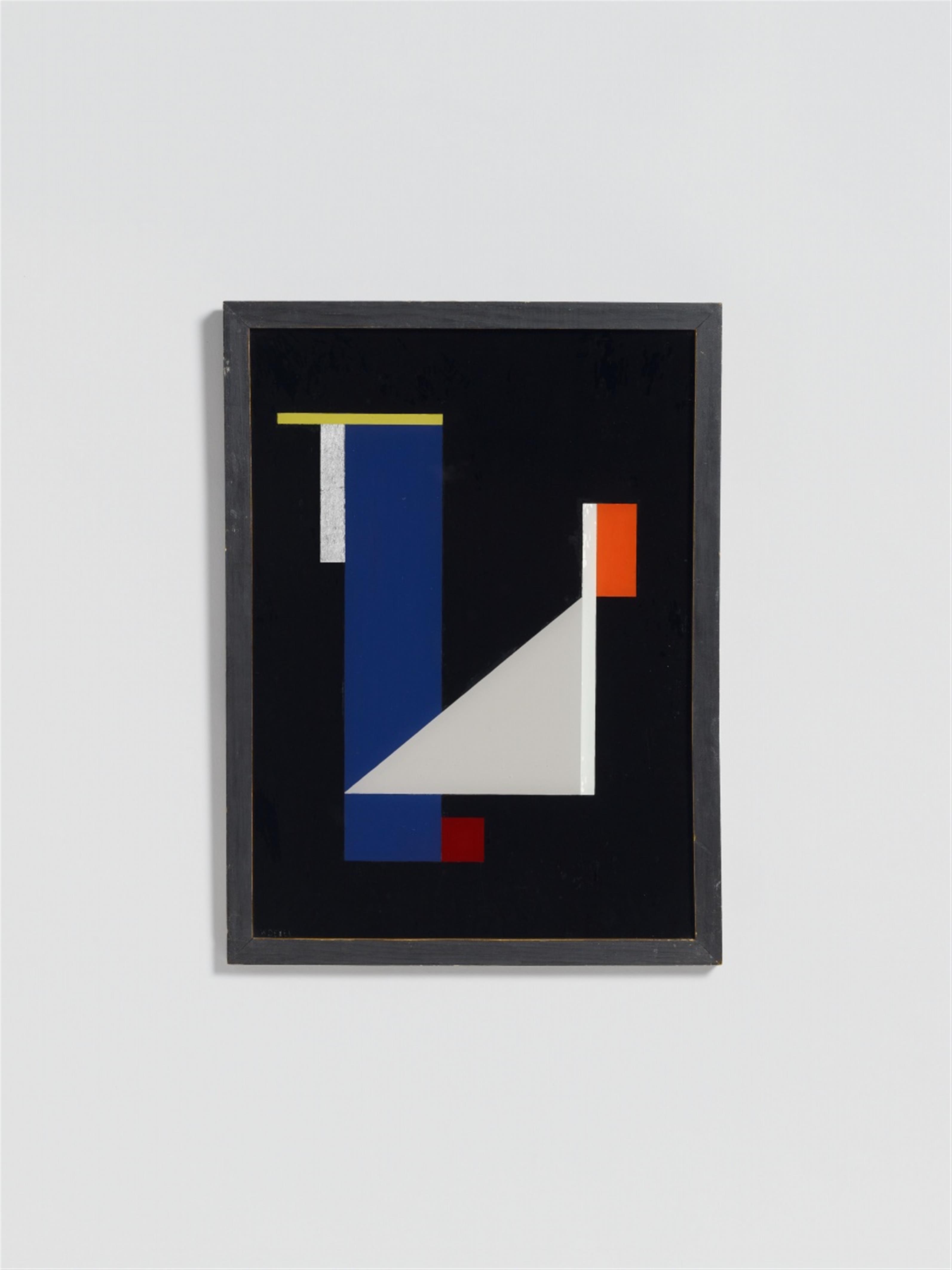Walter Dexel
1924 V oder Blauer Balken und helles Dreieck
1924
Reverse glass painting, with silver foil collage 39.7 x 28.9 cm (frame opening) Framed (original black tinted frame), overall dimensions 43.2 x 32.2 x 1.7 cm. Signed 'W DEXEL' (scratched into paint) whitish lower left. Verso on the protective card additionally signed, dated and inscribed 'VORSICHT! [underlined]/GLASBILD/ WALTER DEXEL/ 1924 V' in black as well as inscribed 'blauer Balken/und helles Dreieck' and '1924 V' in pencil lower left. - The original small wooden frame additionally signed and dated (difficult to decipher) 'W DEXEL 36 [?]' in pencil lower right. - With minor older retouches.
“Those who survey Dexel's paintings of the twenties immediately situate them within the sphere of influence of the axis leading from the Dutch De Stijl group to the Bauhaus. The attempt to define Dexel's position within this field of forces goes amiss if we set out in search of influences. Like others, Dexel undoubtedly stood under the impression made by the exhilarating persona of van Doesburg, and the experimental versatility of El Lissitzky and Moholy-Nagy may also have inspired him. At the same time, his development shows that he was not unprepared to react to these impulses. He did not veer off into Constructivism, instead, he found in it the basis that helped his own intentions to achieve clarity and transparency. In terms of its formal idiom, this basis demanded a withdrawal into a two-dimensional geometric vocabulary and the renunciation of one of the proud licences of the easel painting: self-presentation through the distinctive hand of the artist. It simultaneously presented a challenge to free the concept of art from its aesthetic isolation and to extend form-giving invention to encompass various utilitarian purposes. The restriction is made good through the new possibilities for expansion.” (Werner Hofmann, Der Maler Walter Dexel, Starnberg 1972, reprinted in: Roth Wöbkemeier (ed.), Walter Dexel Werkverzeichnis, Heidelberg 1995, p. 101)
In Dexel's work the medium of reverse glass painting, through its smoothness and its homogeneous surface, fulfils one of the Constructivist principles described here by eliminating the distinctive “hand” of the artist as far as possible. The composition's rigorous two-dimensionality is simultaneously countered by the reflection and lustre of the support, so that the composition appears as thought it were dematerialised. The use of collaged silver foil set alongside the paint underscores this shining effect.
Catalogue Raisonné
Wöbkemeier 248
Provenance
Private possession Henny Schmücking, Brunswick
Literature
Ruth Wöbkemeier, Das Werk Dexels in seiner Zeit, Diskursprobleme und Bildstrategien der Avantgarde zwischen 1912 und 1930, in: Walter Dexel, Werkverzeichnis, Heidelberg 1995, p. 56
Exhibitions
Brunswick 1962 (Städtisches Museum), Walter Dexel, Gemälde, Hinterglasbilder, Aquarelle, Collagen, 1912 bis 1932, cat. no. 68; Munich1968 (Galerie Klihm), Walter Dexel, Hinterglasbilder und Köpfe, without cat. no. (catalogue leaflet); Brunswick 1970 (Kunstverein Braunschweig), Walter Dexel. Bilder, Gouachen, Siebdrucke, cat. no. 53; Cologne 1986 (Galerie Teufel), commission

